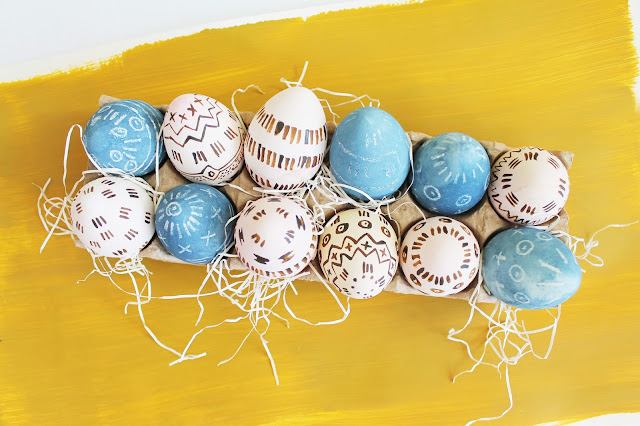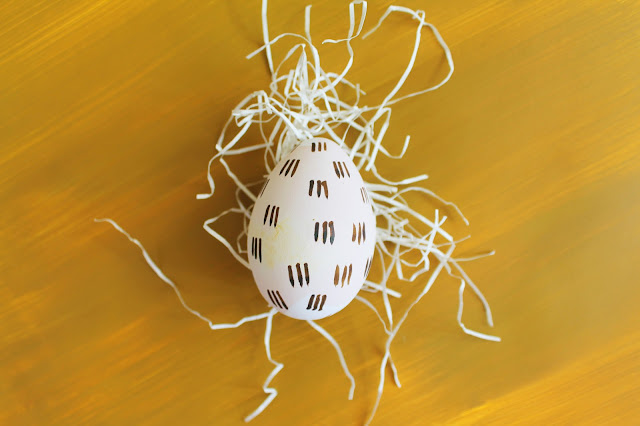Lately I've been enamored with dyeing-- especially with naturally occurring colors. I thought it would be fun to test some of the materials I've seen during my research on these crafting eggs I bought last year on clearance. These eggs are a lot more hardy than eggshells and won't spoil-- meaning you can invest a little more effort to decorating them knowing you can decorate with them year after year! However they'll NEVER compete with my childhood egg collection of blown/dyed eggs from our farm back in GA -- gorgeous hues displayed in a glass vase on the dining room table <3
What You'll Need
Ground tumeric
Red beets
Ground coffee
Indigo dye
Vinegar
Vinegar
Blown eggs or faux eggs like these
Small saucepans and glass bowls for dyeing
White wax crayon
Watercolors
Small paintbrush
Watercolors
Small paintbrush
Spoon
Rubber gloves
Rubber gloves
1. MIXING DYES
Most of these dyes, although natural, will stain clothing, hands and surfaces. Cover your work surfaces adequately and wear gloves!
2. CREATE A PATTERN
3. DYE EGGS
How gorgeous are these dyed with indigo? This was my first experiment with dried indigo and it was WEIRD--but awesome, as well as being inexpensive enough to just try! Can't wait to use what's leftover to dye some T-shirts or pillows!
I used a teeny brush and my watercolor palette to paint on patterns and texture to my pastel eggs.
Gorgeous right? Share yours by tagging me on instagram @lindseycrafter!
This post may include affiliate links for your convenience and to keep Lindsey Crafter makin' stuff!












Really gorgeous!
ReplyDeletehttp://soldenochedecocrochet.blogspot.com.ar/